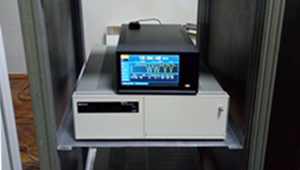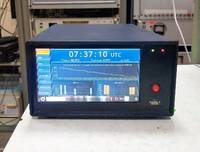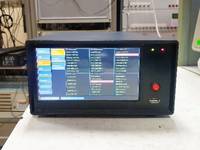HIGHLY STABLE SIGNAL SOURCE
The mobile frequency standard FS017 is intended for use as a highly stable signal source for verification and calibration of generator devices, time-frequency measuring instruments and other equipment, synchronization of telecommunication and navigation systems.
Main areas of application: metrology, instrumentation, communications, systems for the exact determination of coordinates, etc.
MAIN TECHNICAL DATA AND CHARACTERISTICS

Relative error of the frequency at output 10 MHz (5 MHz)
upon release: not more than ±5·10-11.
The relative error of the frequency during verification (calibration) interval (1 year) – not more than ±7·10-11.
Root mean square relative frequency deviation during measurement:
– 1 s – not more than ±2·10-11;
– 10 s – not more than ±1·10-11;
– 100 s – not more than ±2·10-12;
– 1 day – not more than ±5·10-13.
The power supply of the device is carried out from 220 V alternating current network, (±10%), (50±2) Hz. Power consumption – not more than 50 W.
The device allows continuous round-the-clock operation under working operating conditions.
Normal operating conditions:
– ambient temperature: (20±5) ºС;
– relative air humidity: up to 80%;
– atmospheric pressure: (85 – 105) kPa.
Working operating conditions:
– ambient temperature: from +5ºС to +40ºС;
– relative air humidity: up to 90%.
Service life: at least 15 years.
GENERAL INFORMATION ABOUT MOBILE FREQUENCY STANDARD
The basis of the mobile frequency standard FS017 is a high-precision and highly stable frequency generator in the form of a separate rubidium module PRS10, manufactured by Stanford Research Systems (USA). This generator differs from its competitors in the ultra-low values of the spectral power density of phase noise (–130 dB/Hz at an offset frequency of 10 Hz) and the increased service life of a rubidium gas discharge lamp (20 years).
The low phase noise of the module is due to the fact that, unlike most similar generators, the built-in quartz oscillator, whose frequency is controlled by the rubidium gas discharge lamp, works on the third harmonic instead of the first one. The increased resource of the rubidium discharge lamp is provided by its improved design with side outlet. Such a design, in contrast to the traditional spherical lamp, allows to load the stock of rubidium for about 10 times.
The mobile frequency standard FS017 has frequency outputs of 1 Hz, 5 MHz and 10 MHz.
Monitoring the status of the device and controlling its operation is carried out by a built-in personal computer based on the Linux operating system.
The time required for the device to reach the operating mode (warming up of the rubidium cell) for ensuring the frequency error of not more than ± 5·10-11 is only 10 minutes. The presence of an input for an external reference signal of 1 Hz allows the device to be synchronized by a more accurate source. For these purposes, hydrogen and cesium frequency standards can be used, as well as signals from receivers of GPS/GLONASS global positioning systems. 1 Hz time stamps from GPS/GLONASS receivers have long-term stability of up to 10-12.
The standard maintaines the frequency error of not more than 1·10-11 for 72 hours.

The main window of the FS-017 mobile standard management software

The window "RUB" of the FS-017 mobile standard management software




